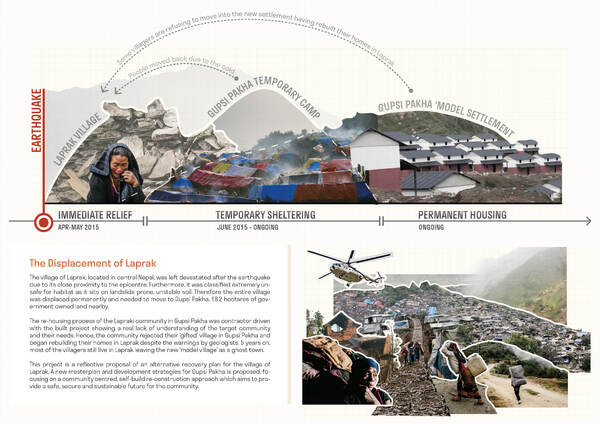In April 2015, Nepal was hit by a major earthquake causing devastation across the country. The recovery process has been slow with many people still living in temporary shelters six years after the disaster, meaning that a significant amount of the population has been living in a transient state of flux. Many approaches have been taken in housing the displaced communities with varying levels of success.
Rethinking Gupsi Pakha began as a response to a failed reconstruction project which aimed to re-house the entire population of the village of Laprak in Gupsi Pakha, a government-owned land nearby. The villagers rejected the contractor-driven project which ignored the needs of the community. This project proposes an alternative recovery plan for the village of Laprak. A new masterplan and development strategies for Gupsi Pakha is proposed, with the aim of learning how to design a more inclusive recovery and re-development model for a displaced community.
There is a huge gender disparity in disaster, especially in developing countries such as Nepal where gender inequality is prevalent pre-disaster, which is often overlooked in many reconstruction programmes. This project explores how the recovery process can be designed to empower women and challenge the existing gender norms. It focuses on a community-centred, self-build re-construction approach which aims to provide a safe, secure and sustainable future for the community.
Personally, I feel that architects and planners need to take more responsibility in addressing the issues faced by displaced communities. Our skill-sets are very valuable and can be utilised more widely in the humanitarian sector. By collaborating more closely with organisations working in aid, we can influence the design of recovery programmes for the better. This project has allowed me to explore my interests in this field and I hope to work on similar projects in the future.


